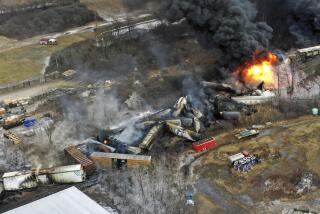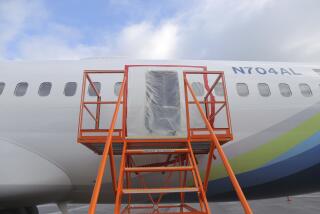Bridge findings are criticized
- Share via
MINNEAPOLIS — The chairman of the House Transportation Committee criticized federal investigators Sunday after a newspaper reported that they had determined an original design flaw was the most likely reason for last year’s collapse of the Interstate 35W bridge in Minneapolis.
National Transportation Safety Board investigators believe the bridge’s original designers probably neglected to calculate the size of key gusset plates -- devices that help connect steel beams -- that eventually failed, the Star Tribune of Minneapolis reported.
Investigators also determined that corrosion of certain gusset plates, extreme heat and shifting piers did not contribute to the bridge’s collapse, the newspaper said, citing unnamed sources with direct knowledge of the inquiry.
The bridge collapsed during evening rush hour Aug. 1, 2007, killing 13 people, injuring 145 and leading to a closer examination of bridge safety in Minnesota and throughout the U.S.
Rep. James L. Oberstar, a Minnesota Democrat and chairman of the House panel, was skeptical of earlier suggestions from the NTSB that gusset plate design was responsible for the bridge collapse, and on Sunday held to that view.
“It stretches both credibility and past experience with bridge structural failure to find causation through a single factor,” Oberstar said.
A spokesman for the NTSB could not be reached. Kevin Gutknecht, spokesman for the Minnesota Department of Transportation, said his agency would comment after the official release of the report.
According to the Star Tribune’s sources, investigators believe that if key steel gusset plates had been designed properly at an inch thick instead of half an inch thick, the bridge would have held up.
The NTSB is scheduled to discuss a draft report of investigators’ findings Nov. 13.
More to Read
Sign up for Essential California
The most important California stories and recommendations in your inbox every morning.
You may occasionally receive promotional content from the Los Angeles Times.










